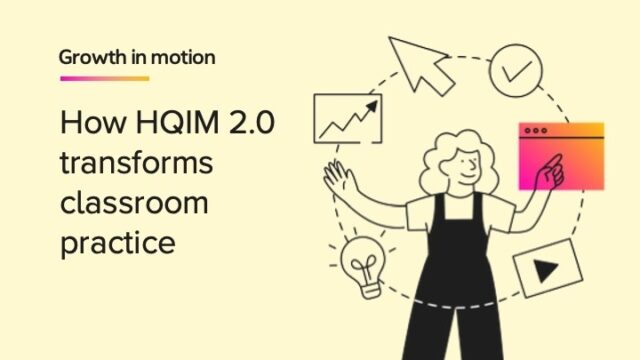
At a special education conference I attended recently, the lunchtime conversation proved just as powerful as the sessions.
We had just come from a session on strengthening instruction in inclusive classrooms. The educators I sat with were talking about differentiation as a way of achieving that goal. They agreed that while nearly all teachers say they differentiate instruction, most don’t use the strategy as effectively as they could.
So how might teachers improve the way they differentiate instruction for students with special needs? We’ll explore some strategies below, but first, let’s dig into the basics.
What Is Differentiated Instruction in Special Education?
Differentiated instruction for special education students is the same as it is for general education students. Teachers vary their instructional strategies so students can master the general education curriculum.
The Individuals with Disabilities Education Act (IDEA) defines special education as “specially designed instruction.” This means students with learning disabilities should receive instruction that meets their unique needs, allowing them to access the general curriculum and make progress that is “appropriate in light of their circumstance.” These services may be provided as part of a Response to Intervention (RTI) framework, delivering specific, prescriptive, and intensive interventions.
Advantages of Differentiated Instruction for Special Education Students
A differentiated classroom offers more opportunities for learning, a major advantage for students with Individualized Education Program (IEP) services or Section 504 plans, who have documented needs requiring special instruction or accommodations. Districts aim to expand meaningful opportunities for these students by placing them in general education classrooms for at least 80% of their school day. Increasing students’ exposure to grade-level content and standards promotes positive learning and pro-social behaviors, and increases independence. Differentiating instruction helps prepare students for this transition.
How to Approach Differentiated Instruction for Special Education Students
Teachers who want to use a differentiated approach in the special education classroom will find that it is not so different from the individualized instruction they are already providing. Here are tips for getting started, along with some differentiated instruction strategies for special education students.
1. Start Small for Success
It is not necessary to change classroom routines all at once. Instead, consider one instructional area where you could try some additional strategies. Incorporate movement into math, tasting into social studies, or read-alouds and games into any subject. Another option is to offer students a variety of ways to show what they know, like creating a slideshow, giving a short speech, or building a model. A gradual implementation, with small, quick wins, will likely result in greater success.
2. Keep Track of Outcomes
Keep a list of your best ideas and how they impact student outcomes. Let’s say you provide students with a choice board that includes multiple ways they can complete an assignment. They might have the choice to perform a dramatic interpretation, design a poster, write a song, complete a worksheet, or play a digital learning game. Take note of student choices, and how successful they were at meeting the objective.
3. Look, Listen, and Learn
Fellow teachers are a great resource for learning about new approaches. Chances are at least one teacher in your professional network has tried differentiated instruction in their classroom. Get their perspective on the planning, collection of IEP progress data, and the utility of differentiated approaches for promoting academic growth and improved social skills. Or, listen to how fourth-grade teacher Toney Jackson differentiates instruction through rhymes and raps, on our Teachers in America podcast.
4. Read the Research
Research does not have to be a heavy lift! Reading professional journals (and education blogs like Shaped!) for ideas and strategies counts as research. Start with learning about evidence-based practices, and how high-leverage practices support teacher development and student learning. You might also research the steps to starting a collaborative learning team (CLT) or a book study with your colleagues. Before implementing new practices, consider the source. Higher-education journals provide a wealth of resources without bias.
5. Trust the IEP
An IEP is designed to identify a student’s needs and guide the delivery of specially designed instruction, so it does not need to change to reflect differentiated instruction. Let’s say a teacher has a small group of students who need specially designed instruction to improve their addition skills. The teacher may use an evidence-based practice of direct instruction to teach addition concepts, or create a differentiated instruction model that allows some students to practice concepts using manipulatives while others use visual models. The teacher is still implementing the IEP and delivering instruction based on goals, but differentiated instruction is the selected format.
Examples of Differentiated Instruction for Special Education Students
How have you used differentiation in a special education setting? We'd love to hear your examples of what worked and what didn't. You can reach us at shaped@hmhco.com
***
How do districts and schools provide high-quality, researched, and evidence-based instruction and resources to address the needs of all students? Learn more in the webinar "Today’s MTSS Classroom: Meeting the Instructional Needs of ALL Students."
Hear how one teacher uses differentiation, like incorporating rhymes and raps, to reach all learners.
Get free strategies to personalize whole-group instruction in your classroom.














